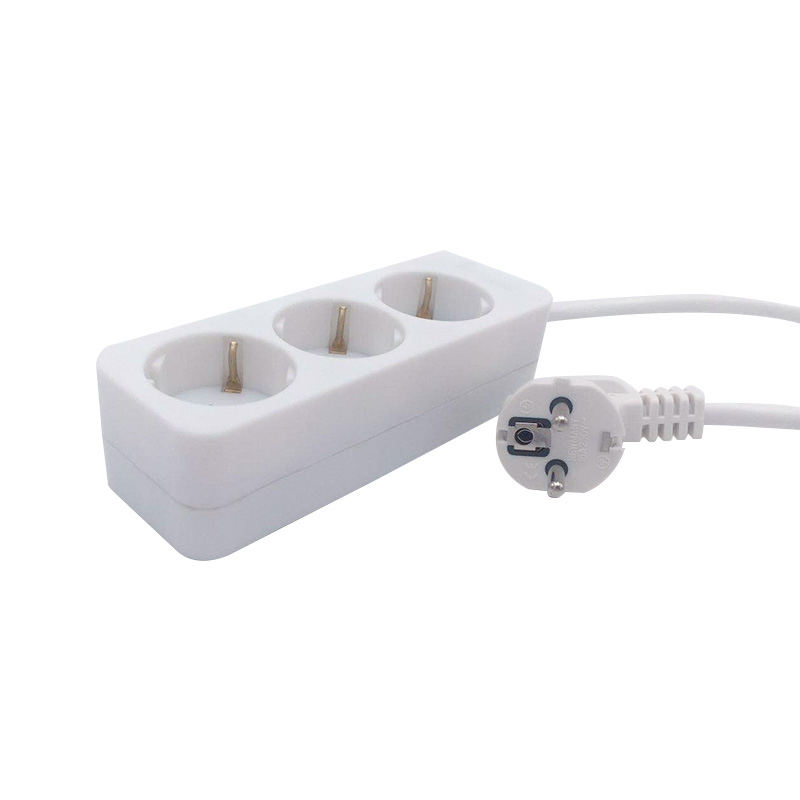Submit feedback
How does POLYPROPENE PP POWER STRIP perform in high and low temperature environments?
 2025.01.17
2025.01.17
 Industry News
Industry News
The performance of polypropylene (PP) power belts, or PP power belts, in high and low temperature environments is one of its important usage characteristics. As a thermoplastic, polypropylene has certain heat resistance and cold resistance, but its performance will be affected to a certain extent at extreme temperatures.
In high temperature environments, the performance of polypropylene PP power belts is mainly affected by the thermal stability and thermal expansion characteristics of the material.
The melting point of polypropylene is about 160℃-170℃, which means that at temperatures close to or above this temperature, the polypropylene PP power belt will lose its solid structure and begin to soften or melt. Therefore, in a high temperature environment, if the temperature exceeds its tolerance range, the polypropylene PP power belt will not be able to maintain its expected performance, which may cause deformation, breakage or failure of the belt.
The thermal expansion coefficient of polypropylene material is large, that is, when the temperature rises, the material will expand significantly. In a high temperature environment, the polypropylene PP power belt may experience dimensional changes, especially expansion in length and width, which will affect its power transmission effect. For example, at high temperatures, the belt may become loose, affecting its working efficiency and precision.
The strength and rigidity of polypropylene will decrease at high temperatures. Especially when the temperature range is exceeded (such as more than 70°C to 80°C), the tensile strength and bending resistance of the material will decrease, which may cause the power belt to stretch or deform during use. Therefore, in high-temperature applications, polypropylene PP power belts are generally not suitable for environments above 80°C, or specially modified or reinforced polypropylene materials need to be selected.
In low-temperature environments, the performance of polypropylene PP power belts is also affected by brittleness and flexibility.
The brittleness of polypropylene increases significantly at low temperatures. At room temperature, polypropylene has good flexibility, but in low-temperature environments (such as below -20°C), the molecular structure of polypropylene becomes tighter, resulting in a significant decrease in the flexibility of the material. At this time, the PP power belt may become brittle and prone to cracks or breaks, especially under strong stretching or impact.

Under low-temperature conditions, the fracture toughness of polypropylene PP power belts is significantly reduced, so excessive stretching or severe vibration needs to be avoided during use. For applications exposed to sub-zero temperatures or extremely cold environments, special care needs to be taken to avoid sudden breaks due to increased brittleness.
At low temperatures, the rigidity of polypropylene increases, which means that the power belt may become harder, reducing its flexibility and adaptability. Although PP power belts have a certain adaptability at room temperature, this increased rigidity may lead to reduced efficiency of transmission force or unstable operation in cold environments.
When polypropylene PP power belts work in an environment where high and low temperatures alternate, the material will face greater stress. This alternating effect of thermal expansion and contraction will cause additional fatigue and damage to the belt.
In frequent temperature fluctuations, polypropylene PP power belts will experience repeated expansion and contraction, which may cause material fatigue, cracks or deterioration over a long period of time. Therefore, for this environment, it is necessary to regularly check the condition of the power belt to prevent normal use due to fatigue failure.
In the case of alternating high and low temperatures, stress concentration may occur on the surface of the belt, especially at joints and bends. Long-term stress concentration will accelerate the aging of the material and affect its service life.
In order to improve the performance of polypropylene PP power belts at extreme temperatures, manufacturers usually adopt the following measures:
By adding heat stabilizers and UV inhibitors, the heat resistance and anti-aging properties of polypropylene PP power belts can be improved, making their performance more stable in high temperature environments.
The use of glass fiber reinforced polypropylene (PP+GF) or other reinforcing materials can improve the tensile strength, corrosion resistance and impact resistance of polypropylene PP power belts at high and low temperatures.
In order to improve the brittleness at low temperatures, the low-temperature fracture resistance of polypropylene PP power belts can be improved by adding toughening agents or flexibility modifiers, making them more reliable in low-temperature environments.
The performance of polypropylene PP power belts in high and low temperature environments has certain limitations. In high temperature environments, its strength and rigidity will decrease, and it is easy to deform or fail under high temperature conditions exceeding 80°C; while in low temperature environments, the brittleness of polypropylene increases, which may cause fracture or loss of elasticity. Therefore, when used under extreme temperature conditions, it is necessary to select a suitable polypropylene PP power belt according to the specific temperature range, or use modified materials to improve its adaptability. In some special industry applications, it may also be necessary to consider other materials that are more suitable for high or low temperature work, such as reinforced polypropylene or other high and low temperature resistant plastics.
 TOP
TOP
 ENG
ENG
 English
English русский
русский 한국어
한국어 Deutsch
Deutsch









